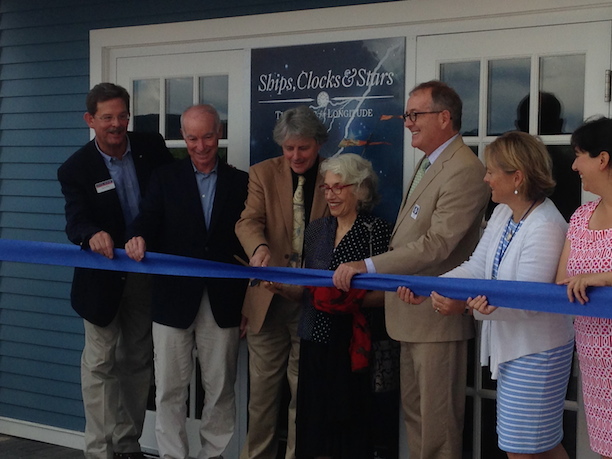Everyone I know mourns the loss this week of astronaut Neil Armstrong. Those of us who saw the live broadcast of the first Moon landing have stood straighter ever since at the mention of his name. Armstrong carried out the combined missions of an explorer, a dare-devil, a visionary, and an emissary for the human race without ever raising his voice or taking credit for accomplishing his almost impossible mission.
John Noble Wilford, who covered the Apollo program for The New York Times and wrote the page-one obituary that appeared on Sunday, tells one of my favorite Armstrong anecdotes in his book The Mapmakers. During the world tour following Apollo 11's return to Earth, the three-hero crew dined with the British Prime Minister at 10 Downing Street. Armstrong proposed a toast that night to John Harrison, the 18th-century English clockmaker whose perfect timekeeper solved the age-old problem of finding position at sea. Armstrong praised Harrison for initiating the navigation innovations that made space travel a reality.
Since Harrison figured as the hero of my book Longitude, I loved learning that Armstrong held him in such high regard. I, too, had lifted a glass to Mr. Harrison on numerous occasions.
In 2004, in preparation for a tenth-anniversary edition of Longitude, my publisher, George Gibson, asked me to suggest some appropriate person who might write a preface to give the book a new dimension. I immediately thought of Armstrong, though I doubted I could even get a letter to him, let alone win such a favor from him. By happy coincidence, James Hansen had just completed Armstrong's biography, First Man, and Hansen's agent approached my agent, Michael Carlisle, for help finding foreign publishers. A path of communication opened.
Following instructions, I wrote an e-mail message to Commander Armstrong that passed through several insulating layers of people. I wasn't given his direct e-address, nor did I expect a direct response, so, when "N. A. Armstrong" appeared in my inbox a few weeks later, it stopped my breathing. "Thank you for your kind note," he wrote. He said he had read my book, and, given his feelings for Harrison, "would be honored to submit something for your consideration as a preface."
It was a trifle for him, but the biggest thing that ever happened to Longitude.
A statement released over the weekend by Armstrong's family urges his many admirers to think of him every time they look at the Moon, where a crater already bears his name.
The coming weeks will see many tributes and salutes to his memory, though he helped plant the best commemorative himself, on the lunar surface -- the small plaque that says, "Here men from planet Earth first set foot upon the Moon. July 1969 A.D. We came in peace for all mankind."

